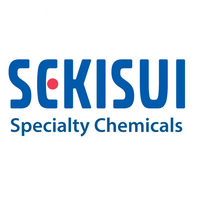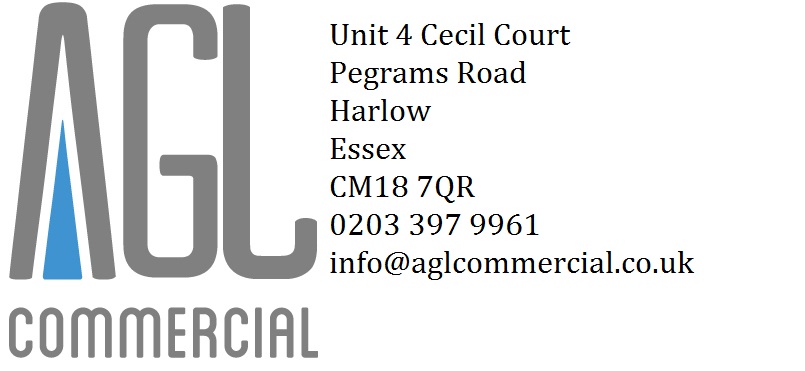Title Page
-
Inspector
-
Conducted on
-
Location
General Facility
AISLES/EXITS/EGRESS
-
Minimum width of any aisle leading to an exit is at least 44 inches wide
-
Are exits marked, free of debris and readily accessible at all times?
-
Is emergency lighting operating?
-
Can you see marked exits or exit signs from the aisles in your area?
-
Are aisles and doorways kept clear; and free of obstructions with trip hazards minimized to permit visibility and movement?
-
Are doors not used for egress (closets, offices, etc) that could incorrectly be thought to be an exit labeled “NOT AN EXIT?”
-
Are floor surfaces clean, dry, level, not slippery or sticky and in good condition?
COMPRESSED GAS CYLINDERS
-
Are cylinders legibly marked to clearly identify the gas contained?
-
Are cylinders stored away from heat source and do they have separation between flammables and oxidizers?
-
Are cylinders located or stored in a manner to prevent them from falling over? This includes empty containers which must have their protective cap in place.
-
Are valve protector caps placed on cylinders when not in use?
-
Are flammables and combustibles stored properly?
EMERGENCY, HEALTH, AND SAFETY INFORMATION
-
Are area hazard signs visible, legible, understandable?
-
Are procedures established for alerting employees of an emergency in the workplace (i.e., fire, shelter, evacuation, etc.)?
-
Are fire alarm pull station locations marked and unobstructed?
-
Are signs with emergency numbers, routes, and evacuation plans posted?
-
Is a copy of the Emergency Action Plan (EAP) for the area available for employees to read?
-
Are employees trained on emergency procedures? Do they know where to assemble in case of an emergency?
FIRE EMERGENCY
-
Are fire extinguishers fully charged and have current inspection dates?
-
Are fire extinguishers mounted, visible, and accessible?
-
Do employees know where the fire extinguishers are and how to use them?
-
Are fire suppression devices (fire extinguishers, deluge systems, monitors, hydrants, hoses cabinets, hoses, etc.) appear to be in good operating condition?
FIRE PREVENTION
-
Are “NO SMOKING” areas enforced?
-
Are electrical outlets or cords not overloaded? Only allowable number of connections (i.e., a 4-way outlet only has 4 pieces of equipment connected and not loaded with additional extension cords).
-
Are fire sprinkler heads unobstructed and free of dirt and corrosion?
FLAMMABLES/COMBUSTIBLES
-
Are hazardous materials properly stored?
-
Are chemicals properly stored and returned to appropriate cabinet at end of shift?
-
Are aerosol cans in good condition (no corrosion, damage, etc.)? If not in use, are they stored in the appropriate flammable/combustible cabinets?
-
Are flammable cabinets grounded and in good condition?
-
Are flammable liquids stored in approved safety containers?
-
Are materials that could burn kept away from ignition sources?
-
Is area free of excessive trash or combustibles?
-
Are the tops of the flammable / combustible cabinets clear (nothing stored on top)?
-
Are all flammable bottle tips unmodified and/or undamaged?
-
Is heat producing equipment turned off at night when no one is present?
HOUSEKEEPING/WORK ENVIRONMENT
-
Are desk/work and storage areas clean, organized, and sanitary?
-
Are trash containers (large 55 gallon) covered? If less than 55 Gal, are they maintained appropriately?
-
Are electrical/network cables organized to eliminate trip hazards?
-
Are drawers of desks and file cabinets kept closed when not in use?
-
Are file cabinets arranged so drawers do not open into aisles?
-
Is only one file drawer opened at a time?
-
Is knife blade on paper cutter lowered and latched when not in use?
-
Is required lighting operational and/or appear adequate for the area and work performed?
-
Are floor openings covered and secure?
-
Are spilled or dropped items cleaned up and put away?
-
Are guardrails installed, free of corrosion or obvious discrepencies , and visibly in good condition?
SECURITY ITEMS
-
Do employees have proper ID badges?
-
Do contractors/vendors have proper ID badges?
-
Are visitors escorted and have proper ID badges?
-
Are contractors and visitors displaying their ID badges?
-
Are doors that should be secure not being propped open?
STRUCTURES
-
Ceiling tiles are not damaged, loose, or missing?
-
All overhead hazards have been identified?
ENVIRONMENTAL
CLEAN AIR ACT COMPLIANCE
-
Are any solvent contaminated rags lying about in the work area?
-
Are solvent contaminated rags properly disposed of?
-
Have all open top solvent pump cans been removed from the work area?
-
Are containers, solvent dispensing containers, paint gun cleaning containers,<br>and solvent dispensing bottles closed when not in use?
CLEAN WATER ACT COMPLIANCE
-
Employees do not dump wastes into drains or sinks unless authorized (including wash water and mop water)
-
No wastes dumped outside or in storm sewers or catch basins?
-
Are pipes, pumps, hoses, and valves free of leaks or defects?
-
Do sumps, pits, lift station containment valves remain dry?
-
Are spills and leaks attended to and reported when required?
HAZARDOUS/NON-HAZARDOUS WASTE COMPLIANCE
-
Are hazardous waste containers properly identified and labeled with the words, “HAZARDOUS WASTE?”
-
Are used oil collection containers properly identified and clearly labeled with the words, “USED OIL?”
-
Are controlled and non-hazardous wastes being collected and managed properly (i.e., laundry, coolant sludge, composite waste, batteries, flourescent lamps)?
-
Are containers properly identified and clearly labeled with contents?
-
Are hazardous waste collection containers fully closed while not in use?
-
Are used oil waste containers closed while not in use?
-
Are trash cans free of hazardous waste?
-
Are trash cans free of scrap metal?
-
Is there less than 55 gallons per waste stream at satellite accumulation area(s)?
-
Are hazardous waste satellite accumulation area signs in place?
-
Are employees familiar with the waste materials generated in the work area and the proper disposal method(s)?
-
Are proper absorbent materials on hand for spills?
-
Is waste removed in a timely manner?
SAFETY
EMPLOYEE WORK PRACTICES
-
Are employees and contractors free from metal jewelry or other items that could get pulled into rotating equipment when around machinery?
-
Is the Safe Work Permit available and correctly filled out for any work being performed in area?
ELECTRICAL EQUIPMENT MARKINGS
-
Do circuit breakers clearly indicate whether they are in the “ON” or “OFF” position and are switch panels clearly marked?
-
Is electrical panel access clear – 36 inches clearance in front of panel?
-
Is equipment intended for long-term use hard wired into permanent facility wiring?
-
ELECTRICAL GROUNDING
-
Are electrical appliances, portable electrical tools, and fixed electrical equipment grounded or UL rated/double insulated and in good repair?
-
Do extension cords (in use and stored) have a grounding conductor and are in good condition (no cuts, kinks, missing prongs, etc.)?
-
Are extension cords used only for temporary wiring applications?
EQUIPMENT
-
Proper guarding of any pinch points, rotating collars, cams, chucks, couplings, shafts flywheels, spindles, bolt ends, rotating mechanisms, etc?
-
Are all protective guards (including light curtains and interlocks) in place, effective, and checked daily or before use?
-
Are all controls and emergency stops clearly identified and within reach of operator?
-
Are all emergency stops, safety guards, and safety devices located on equipment and tools working and adjusted properly?
-
Are grinder gaps 1/8 inch from bottom of wheel and 1/4 inch from top of wheel?
-
Grinding wheel surface not damaged or worn (must be square and no grinding on side of wheel)?
-
No aluminum found in grinding wheel surface?
-
Are fans inspected annually for damage (cracked blades, guards, cords, etc)?
-
Are heat lamp and work light bulbs guarded?
-
Are all fixed machines bolted to the floor?
-
Do air nozzles have relief valves to decrease pressure to 29 psi or lower?
-
Are air disconnects and safety nozzles the correct type?
-
Air lines and hydraulic lines free of damage?
ERGONOMICS
-
Ergonomic problems observed with workstation, keyboard, posture, or work habits?
-
Employees are advised on the proper lifting techniques?
-
Are mechanical lifting aids available for heavy or awkward items?
EYEWASH STATION
-
Eyewash / Shower Station's is clean, operational, and missing no equipment?
-
Eyewash / Shower Station's is located in a way that assures free and unimpeded access?
FORKLIFT/INDUSTRIAL TRUCKS – DAILY INSPECTION
-
Daily visual inspection performed prior to use? Is monthly inspections documented and filed?
-
Do all operators have current qualification?
-
Are service valves closed on all propane equipment left inside overnight?
-
Harness and lanyard used at all times with scissor-lift, aerial platform, etc?
-
Are Powered Industrial Trucks (PIT's) driven backwards with awkward or bulky loads?
-
Are all traffic signs observed? (Operators must stop at stop signs.)
-
Are pedestrians given the right-of-way?
-
Are safety glasses and seatbelt worn while operating the truck?
HAZARD COMMUNICATION – CHEMICAL SAFETY
-
Do employees know what an SDS (Safety Data Sheet) is, where to find them, and how to use them?
-
Is each container of hazardous chemicals in the work area properly labeled by<br>identifying the chemical it contains and marked with health hazards?
-
Are all chemicals that are used in the facility listed in the Online SDS Management System and available?
-
Is food separated and away from chemicals in the work area?
HOIST/CRANES/LIFTING DEVICES
-
Are all slings, hoists, chains, jacks, and supports certified and tagged with load limits and inspection dates?
-
Is the weight of all loads known and is the crane visually inspected before use? Is the monthly inspection documented and filed?
-
Is there a full, unrestricted view for operator before lifting load?
-
Are all loads being lifted overhead secured?
-
Is there no one beneath the load while it is suspended?
-
Does the crane operator have a current license or certificate (for crane operation and rigging applications)?
LADDERS/SCAFFOLDING
-
Are all rungs or steps on ladders present and in good condition?
-
Are all labels present and legible on ladders?
-
Is ladder inspection attached and current?
-
Are all ladders in good condition with no structural damage?
-
Are there no metal or aluminum ladders in electrical areas?
-
Are ladders being used properly (only one person on ladder at a time and no one standing above the second step down from the top)?
-
Are fixed stairs being used (instead of ladders) where regular travel is needed?
PERSONAL PROTECTION EQUIPMENT (PPE): EYE AND FACE/RESPIRATORY/HEARING
-
Are high-noise areas clearly marked with "Hearting Protection Required" signs or messaging?
-
Is hearing protection devices readily available close to work area?
-
Are the hearing protection devices dispensers clean, maintained, and stocked?
-
Are approved safety glasses, face shields, side-shields, gloves, aprons, FRC clothing, and hearing protection used in required areas?
-
Are employees using appropriate respirators for the work being done?
-
Are respirators clean and stored properly?
-
Are employees using respirators clean-shaven (so mask will seal against face)?
-
Are employees trained and knowledgable in their proper use?
-
Are Escape Respirators clean, full, and stored properly? Inspection current?
PPE: FALL PROTECTION
-
Is appropriate fall protection provided and used properly (safety harness, lanyard, and if needed, self-retracting lifeline)?
-
Is fall protection PPE stored properly, kept clean, and out of direct sunlight?
-
Is fall protection inspected before each use, documented and filed monthly, and certified annually?
-
Are the employees Trained and certified for the specific fall protection use? Visually verified by seeing certification card or training roster?
WALKING SURFACES/STAIRS
-
Are all floor tracks / sumps covered?
-
Is the angle of fixed stairs within 30 to 50 degrees?
-
Are non-slip surfaces in good condition on steps and platforms?
-
Are stairwells clear and handrails in good condition?
-
Are mobile work platforms available and used?
Representatives
-
SSCA Representative









